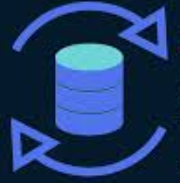SQL Server CDC (Change Data Capture) is a feature that captures changes made to the SQL Server database tables and makes them available to external applications in real-time. CDC can be used to monitor changes to the database, track history, and replicate data to other systems.

The CDC feature was introduced in SQL Server 2008 and has since become an essential tool for many organizations. With CDC, applications can keep track of data changes and use this information to generate reports, maintain audit trails, and more.
How CDC works
CDC captures changes to tables by reading the transaction log. Whenever a transaction is committed to the database, CDC reads the transaction log and identifies the changes made to the table. These changes are then stored in a table in the database, called the CDC table. The CDC table contains all the changes made to the source table, including the old and new values of the modified rows.
Once the CDC table has been populated, external applications can access it to retrieve the change data. CDC provides two mechanisms for accessing the change data: polling and streaming. Polling involves periodically querying the CDC table for changes, while streaming allows applications to subscribe to the changes and receive them in real-time.
Benefits of using CDC
CDC provides several benefits to organizations that need to monitor data changes. Some of these benefits include:
Real-time data capture: CDC captures data changes in real-time, making it easier to keep track of data changes and maintain an up-to-date view of the data.
Efficient data processing: By capturing only the changes made to the data, CDC reduces the amount of data that needs to be processed, making it more efficient than traditional methods of data capture.
Improved data accuracy: CDC captures changes to the data accurately, ensuring that the data is always up-to-date and consistent.
Simplified replication: CDC makes it easy to replicate data to other systems, allowing organizations to maintain copies of their data in different locations.
CDC in SQL Server 2019
In SQL Server 2019, CDC has been enhanced to support more scenarios and provide better performance. Some of the new features in SQL Server 2019 include:
Incremental snapshot: CDC now supports incremental snapshots, which allows for faster initial load of the CDC tables.
Support for temporal tables: CDC can now capture changes made to temporal tables, which track changes to data over time.
Improved performance: CDC in SQL Server 2019 has been optimized for better performance, making it faster and more efficient than ever before.
Improved security: CDC now supports encryption of change data, ensuring that sensitive data is protected.
Another advantage of SQL Server CDC is that it can help identify and track data changes in real-time. This can be particularly useful in applications where quick and accurate data access is necessary, such as e-commerce or financial services. With CDC, it is possible to capture all changes made to a table in real-time and apply them to another database or system, allowing for more streamlined and efficient data management.
Additionally, SQL Server CDC can be used in conjunction with other technologies and tools to enhance data analytics and reporting. For example, by combining CDC with a data warehouse or data lake solution, businesses can create a more comprehensive and integrated data environment, allowing for deeper insights and more accurate reporting.
Another potential use case for SQL Server CDC is in the realm of compliance and auditing. By tracking all changes made to a table or database, CDC can help ensure that businesses remain compliant with regulations and policies, and can provide an audit trail for any changes made to data. This can be particularly important in industries such as healthcare or finance, where data security and compliance are critical concerns.
In terms of implementation, SQL Server CDC is relatively easy to set up and configure, and can be used with both on-premises and cloud-based SQL Server instances. There are also a variety of tools and resources available for businesses looking to implement CDC, including documentation and support from Microsoft, as well as third-party tools and services.
In conclusion, SQL Server CDC is a powerful and versatile tool for tracking data changes in SQL Server databases. Its real-time capabilities, ease of implementation, and potential use cases in areas such as data analytics, compliance, and auditing make it a valuable addition to any organization’s data management toolkit. Whether you are a small business looking to streamline your data management processes, or a large enterprise seeking to improve your data analytics and reporting capabilities, SQL Server CDC has the potential to deliver significant benefits and help you achieve your goals.

